I get a lot of questions about how the Alpine Bivy works. It is clear to me that I have not done a good job of describing the system. It is not easy to explain - even when people see them in place they often don't quite understand the different layers of protection. The images above and below are from Amazon.com. At the very top is our most common configurations, with the mosquito mesh zipped in place. The image just below that shows the bivy open - I sleep with the bivy open when there are no bugs. It is very pleasant.
Below the bivy is set for rain, it becomes virtually a one man tent. This is what I mean when I say "I pulled the bivy over me" or "I dropped the top of the bivy". The orange material is gore-tex, water runs right off. The grey material is a rubberized waterproof material, rainwater can pool on the deck of the boat and we stay dry. Instructions tell me not to full zip the cover in place to avoid suffocation. I usually leave a six inch stretch unzipped, this still blocks the rain but lets air circulate.
Below are our two bivy sacs in place on Spartina, we were setting up for the evening at Tilghman Creek. We can't use tent stakes, as designed, to spread the bivy out. Instead we use bits of line to fasten the foot of the bivy to the bottom of he first bulkhead under the foredeck, and two more bits of line at the "shoulders" of the sac are tied to eye pads (which also serve other purposes while in the sailing configuration). Across the top is a bungee cord (I would not survive in life without bungee cord), the tent-pole arches in the bivy are tied to that for vertical support.
I hope that helps clarify things. I will say they have made a huge difference in the cruising life styles. I really don't know how we did the first couple of trips without them.
Rain? No big deal. Bugs? Not a worry. A nice breeze, no bugs and a clear night - leave the bivy open and enjoy the star filled sky. It doesn't get much better than that.
steve
Subscribe to:
Post Comments (Atom)










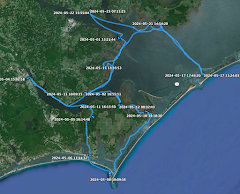
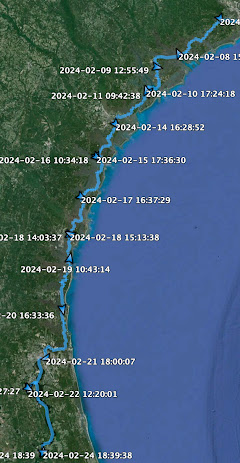

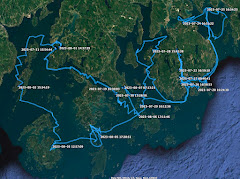

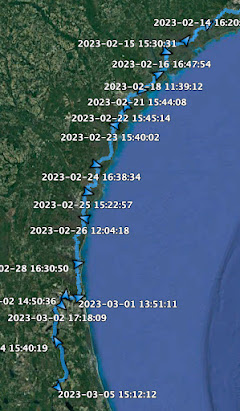

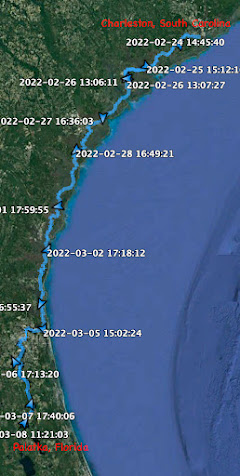
























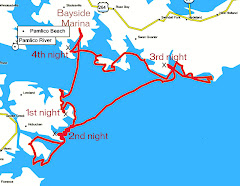


5 comments:
Yup. Bungees and small woodworking clamps. Don't go cruising without 'em.
Hi Steve
Do you have alternatives to the sleeping bag in warmer weather?
Bruce did not bring a sleeping bag, he brought just a light blanket on this last trip and was satisfied with that. I brought a sleeping bag but often slept on top of it, using it essentially as a cushion. Sometimes I would wake at 3 or 4 in the morning and, in the predawn chill, it was nice to slip into the sleeping bag.
On hot nights the bivy by itself feels like a lightweight sheet.
steve
Do you use a sleeping mat and do you put it inside the bivvy.
I love your Log and follow it all the time including following you on google earth.You have some wonderfull places to sail.I guess I do too as I go to Able Tasman National Park NZ most years latly in a borrowed Houdini
Yes, Jamie. I should have explained that too. I'll do an equipment update in a while and mention that. We both use 3/4 self-inflating style sleeping mats inside the bivy. Works fine, then they roll up and are tucked away for the day.
Tasman Sea?? Yes, I would say you have it pretty good too.
steve
Post a Comment